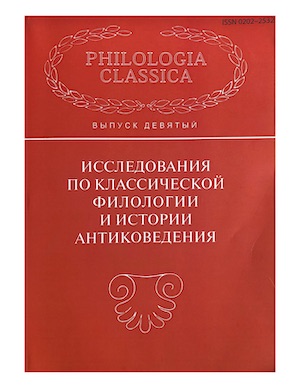Колесница в Греции VII–IV вв. до н. э.: Некоторые наблюдения
Аннотация
В статье рассматривается возможность применения колесницы в Греции архаической и классической эпохи вне ристалищ, то есть как транспортного средства и в культовых целях. Колесница (ἅρμα / ἅρματα, ὄχεα, δίφρος) — это дорогостоящий и престижный экипаж, ассоциирующийся с богами и героями, двухколесный, запряженный лошадьми, на котором стоя могли ехать один или два человека. Изображение колесниц в искусстве может служить для придания сцене героического ореола, иногда в ущерб достоверности, однако заведомо нереальные функции им приписывались едва ли, поскольку они не вышли из употребления и были известны публике. Далекие путешествия и перевозка объемных грузов (например, культовых статуй или жертвенных животных) на них представляются невозможными. Везти с собой женщину возничий мог в особых, обусловленных традицией случаях, играющего музыканта — никогда. Как повседневное транспортное средство колесница не использовалась, однако засвидетельствовано ее церемониальное применение: в процессиях на религиозных празднествах, а также, возможно, на похоронах (но, конечно, не для транспортировки тела покойного) и свадьбах (в частности, чтобы доставить невесту в дом жениха), если перед нами не средство героизации, а реальная деталь. Уточненное представление о возможностях колесницы и внимание к лексике, обозначающей транспорт, позволяют избежать некоторых ошибок при интерпретации античных текстов (Hymn. Hom. 3, 229–238; Eur. Phoen. 174; 1110 и др.).
Ключевые слова:
колесница, Древняя Греция, культ, процессия
Скачивания
Библиографические ссылки
Загрузки
Опубликован
Как цитировать
Выпуск
Раздел
Лицензия
Статьи журнала «Philologia Classica» находятся в открытом доступе и распространяются в соответствии с условиями Лицензионного Договора с Санкт-Петербургским государственным университетом, который бесплатно предоставляет авторам неограниченное распространение и самостоятельное архивирование.






